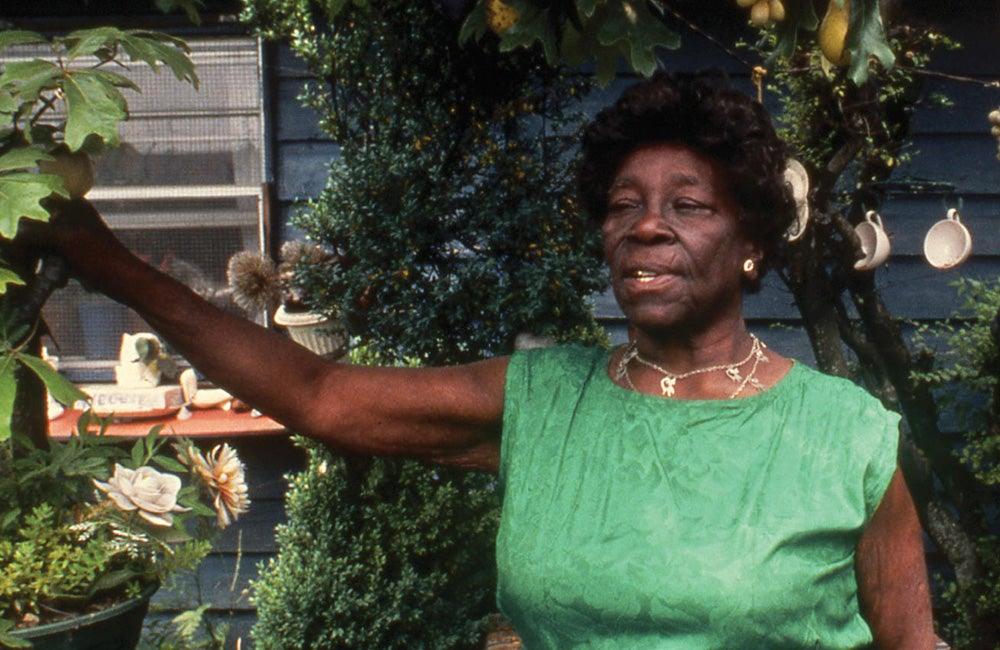First published: Summer 2020
The garden environment and works of Nellie Mae Rowe reflect the story of the African-American South
African-American artists throughout history have used a coded language that has given them the freedom to communicate the condition of their lives. Other Americans know the narrative of the African-American South, but it is mostly colourless without the figuration of black folktales, music and art. The garden environment and drawings of Nellie Mae Rowe colour that narrative, revealing pain and celebrating joy. She developed a style of implied narration, juxtaposing forms and figures to retell black history and to evoke her faith.
Rowe was born on July 4, 1900, and raised on her parents’ farm in Fayette County, Georgia. Of her early life, she said, “I didn’t go to school to learn drawing. I guessed at it when I was a little gal. Because we had to go to the fields, pick cotton and all like that. I was about 17 years old when I ran off and got married. [My first husband] farmed and worked the sawmill awhile. He died in Vinings in 1936. Later that year, I married Henry Rowe who was much older than me”.
Following the death of her second husband in 1948, Rowe turned to doll-making and decorating or “dressing” her garden; and, for the next 30 years, her attention centred around what she called her “playhouse”. She said, “Now I am going to get back to when I was a little gal playing in the yard, playing in my playhouse”.
 Nellie Mae Rowe's house in Vinings, 1971, photo: Lucinda Bunnen, Museum of Contemporary Art of Georgia
Nellie Mae Rowe's house in Vinings, 1971, photo: Lucinda Bunnen, Museum of Contemporary Art of Georgia
Rowe’s playhouse, like most yard projects in the black South, is now gone, but it has been artfully preserved by photographers. Rowe lived in a five-room house set near the front of a one-quarter-acre plot facing Paces Ferry Road in Vinings, Georgia, a suburb of Atlanta. She decorated her front and side gardens – which were enclosed by fenced shrubs – with an assortment of bright dolls, bric-a-brac, papier-mâché figures, milk jugs, and Christmas decorations. Her yard was similar to many African-American gardens in the South, creative works known as “yard shows”, ”yard art" and "dressed yards”.
"The gardens and yards [of African Americans] in rural areas may present an unprepossessing appearance to passers-by, but the apparent scattering of objects is by no means casual,” says environmental historian Richard Westmacott. “They are places where independence is asserted with extraordinary vigour and resourcefulness.”
This is an article extract; read the full article in Raw Vision #106




